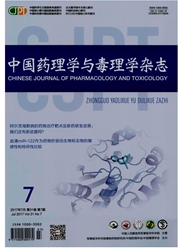

 中文摘要:
中文摘要:
OBJECTIVE To investigate the transcriptomic details on the biosynthetic pathways in different parts of the Panax notoginseng and the pharmacological activity of the saponins extracted from the flower(FS)on vascular insufficiency conditions.METHODS RNA sequencing of three different Panax notoginseng tissues was performed using next generation DNA sequencing and differential gene expression was validated by real-time PCR.In order to determine pro-angiogenic and therapeutic effects of FS on myocardial infraction(MI),FS was examined on the endothelial cell migration assay,vascular insufficiency model in zebrafish and MI model in rats.RESULTS After assembling the high quality sequencing reads into 107 340 unigenes,biochemical pathways were predicted and 9 908 unigenes were assigned to 135 KEGG pathways.Among them,270 unigenes were identified to be involved in triterpene saponin biosynthesis as well as 350 and 342unigenes were predicted to encode cytochrome P450 sand glycosyltransferases,respectively.One unigene was annotated as CYP716A53v2,probably participates in the formation of protopanaxatriol from protopanaxadiol and the differential expression of this gene was confirmed by real-time PCR.In addition,the pharmacological evaluation demonstrate that FS significantly promoted vascular endothelial growth factor(VEGF)induced the migration of human umbilical vein endothelial cells(HUVECs)and partially restored defective intersegmental vessels in a chemically induced vascular insufficiency model of zebrafish larva.Moreover,the two week posttreatment of the rat MI model with FS(25-50mg·kg-1·d-1)induced approximately 3-fold upregulation of VEGF mRNA expression,with a concomitant increase in blood vessel density in the peri-infarct area of the heart by 50.7%,compared to 41.4%in the MI group.Furthermore,TUNEL analysis indicates a reduction in the mean apoptotic nuclei per field in peri-infarct myocardium upon FS treatment.CONCLUSION We have established a global transcriptome dataset for Panax notoginseng and provided addit
 英文摘要:
英文摘要:
OBJECTIVE To investigate the transcriptomic details on the biosynthetic pathways in different parts of the Panax notoginseng and the pharmacological activity of the saponins extracted from the flower(FS)on vascular insufficiency conditions.METHODS RNA sequencing of three different Panax notoginseng tissues was performed using next generation DNA sequencing and differential gene expression was validated by real-time PCR.In order to determine pro-angiogenic and therapeutic effects of FS on myocardial infraction(MI),FS was examined on the endothelial cell migration assay,vascular insufficiency model in zebrafish and MI model in rats.RESULTS After assembling the high quality sequencing reads into 107 340 unigenes,biochemical pathways were predicted and 9 908 unigenes were assigned to 135 KEGG pathways.Among them,270 unigenes were identified to be involved in triterpene saponin biosynthesis as well as 350 and 342unigenes were predicted to encode cytochrome P450 sand glycosyltransferases,respectively.One unigene was annotated as CYP716A53v2,probably participates in the formation of protopanaxatriol from protopanaxadiol and the differential expression of this gene was confirmed by real-time PCR.In addition,the pharmacological evaluation demonstrate that FS significantly promoted vascular endothelial growth factor(VEGF)induced the migration of human umbilical vein endothelial cells(HUVECs)and partially restored defective intersegmental vessels in a chemically induced vascular insufficiency model of zebrafish larva.Moreover,the two week posttreatment of the rat MI model with FS(25-50mg·kg-1·d-1)induced approximately 3-fold upregulation of VEGF mRNA expression,with a concomitant increase in blood vessel density in the peri-infarct area of the heart by 50.7%,compared to 41.4%in the MI group.Furthermore,TUNEL analysis indicates a reduction in the mean apoptotic nuclei per field in peri-infarct myocardium upon FS treatment.CONCLUSION We have established a global transcriptome dataset for Panax notoginseng and provided addit
 同期刊论文项目
同期刊论文项目
 同项目期刊论文
同项目期刊论文
 Pro-angiogenic activity of notoginsenoside R1 in human umbilical vein endothelial cells in vitro and
Pro-angiogenic activity of notoginsenoside R1 in human umbilical vein endothelial cells in vitro and In vivo Angiogenesis Screening and Mechanism of Action of Novel Tanshinone Derivatives Produced by O
In vivo Angiogenesis Screening and Mechanism of Action of Novel Tanshinone Derivatives Produced by O Discovery of a benzofuran derivative (MBPTA) as a novel ROCK inhibitor that protects against MPP(+)-
Discovery of a benzofuran derivative (MBPTA) as a novel ROCK inhibitor that protects against MPP(+)- Basal Flt1 tyrosine kinase activity is a positive regulator of endothelial survival and vascularizat
Basal Flt1 tyrosine kinase activity is a positive regulator of endothelial survival and vascularizat Amelioration of acute myocardial infarction by saponins from flower buds of Panax notoginseng via pr
Amelioration of acute myocardial infarction by saponins from flower buds of Panax notoginseng via pr 期刊信息
期刊信息
